Phenom II Overclocking
It has been quite a while coming, but AMD fans can once again put together a screaming overclocking system with Phenom II. There are two apparent CPU candidates for the Phenom II OC system. The obvious choice might appear to be the 940BE, but the new 720BE has many charms at a lower price. Personally we would prefer the upcoming 945BE as the CPU for a monster Phenom II OC system, but that CPU is not currently available though it should appear beginning in April. For those reasons the 720BE is the heart of the Phenom II OC system.
As discussed in many overclocking articles here, there are normally two types of overclockers. First are those who overclock for value, which are those that select cheaper parts rated at lower specs for their ability to overclock to much higher performance levels. Second, there is the overclocker who is trying to reach the highest overclock possible, and who usually chooses the highest priced and higher-performance parts to overclock even further. This last group should likely wait for the 945BE for the flexibility if nothing else.
Generally, parts were selected because they are a good value that becomes an outstanding value when overclocked. Since the newer Phenom II processors, like the 720BE, support either DDR3 or DDR2 there are two Phenom II Overclocking systems - DDR3 and DDR2. They only differ in the motherboard and memory choice.
The choice of the $145 Phenom X3 720BE for the Overclocking System pushes our OC perspective toward the value side of the overclocking equation. That means we have paired the 720 with a new DDR3 $135 motherboard instead of the very best $200 ASUS M4A79 Deluxe. It also means we matched the Full HD monitor with a cheaper video card that can deliver performance as good as you will likely get on a 1920x1080 monitor. It makes little sense to suggest a higher performing video card or CF or SLI graphics system if you can only see the better performance on a 30" monitor that is not part of this system.
| Phenom II DDR3 Overclocking PC | ||
| Hardware | Component | Price |
| Processor | AMD Phenom II X3 720 BE (2.8GHzx3, 3x512KB L2, 6MB L3 Cache) | $145 |
| Cooling | Xigmatek Dark Knight-S1283V 120mm Long Life Bearing CPU Cooler - Retail | $40 |
| Video | MSI R4850-512M OC Radeon HD 4850 512MB ($30 Rebate) | $125 |
| Motherboard | Asus M4A78T-E | $135 |
| Memory | OCZ Reaper HPC 4GB (2 x 2GB) DDR3 1600 (PC3 12800) Dual Channel Kit Model OCZ3RPR16004GK ($40 Rebate) | $65 |
| Hard Drive | Samsung SpinPoint F1 HD103UJ 1TB | $100 |
| Optical Drive | LG BD/HD DVD / 16x DVD+/- RW GGC-H20L - Retail | $115 |
| Audio | On-Board Audio | - |
| Case | COOLER MASTER Centurion 534 RC-534-SKN2-GP Black/Silver Aluminum & Mesh Bezel ATX Mid Tower | $50 |
| Power Supply | BFG Tech LS Series LS-550 550W Continuous@40C SLI Certified CrossFire Ready 80 PLUS Certified ($20 Rebate) | $60 |
| Base System Total | $835 | |
| Display | ASUS VH222H Black 21.5" 5ms HDMI Full HD Widescreen LCD Monitor (1920x1080) | $180 |
| Speakers | Logitech X-540 70 Watts 5.1 Speaker System ($20 Rebate) | $59 |
| Keyboard | Logitech G11 USB Gaming Keyboard | $59 |
| Mouse | Logitech MX518 8-Button/1 Wheel USB 1800dpi Laser Mouse | $40 |
| Operating System | Microsoft Vista Home Premium OEM | $99 |
| Complete System Price | $1272 | |
 |
| Phenom II DDR2 Overclocking PC | ||
| Hardware | Component | Price |
| Processor | AMD Phenom II X3 720 BE (2.8GHzx3, 3x512KB L2, 6MB L3 Cache) | $145 |
| Cooling | Xigmatek Dark Knight-S1283V 120mm Long Life Bearing CPU Cooler - Retail | $40 |
| Video | MSI R4850-512M OC Radeon HD 4850 512MB ($30 Rebate) | $125 |
| Motherboard | Gigabyte GA-MA790GP-UD4H | $139 |
| Memory | OCZ Reaper 4GB (2 x 2GB) DDR2-1150 (PC2 9200) ($15 Rebate) | $66 |
| Hard Drive | Samsung Spinpoint F1 HD103UJ 1TB | $100 |
| Optical Drive | LG BD/HD DVD / 16x DVD+/- RW GGC-H20L - Retail | $115 |
| Audio | On-Board Audio | - |
| Case | Cooler Master Centurion 534 RC-534-SKN2-GP Black/Silver Aluminum & Mesh Bezel ATX Mid Tower | $50 |
| Power Supply | BFG Tech LS SERIES LS-550 550W Continuous@40C SLI Certified CrossFire Ready 80 PLUS Certified ($20 Rebate) | $60 |
| Base System Total | $840 | |
| Display | ASUS VH222H Black 21.5" 5ms HDMI Full HD Widescreen LCD Monitor (1920x1080) | $180 |
| Speakers | Logitech X-540 70 Watts 5.1 Speaker System ($20 Rebate) | $59 |
| Keyboard | Logitech G11 USB Gaming Keyboard | $59 |
| Mouse | Logitech MX518 8-Button/1 Wheel USB 1800dpi Optical Mouse | $40 |
| Operating System | Microsoft Vista Home Premium OEM | $99 |
| Complete System Price | $1277 | |
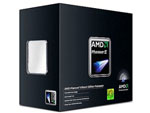 |
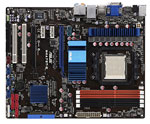 |
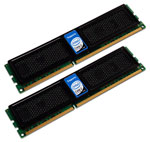 |
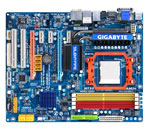 |
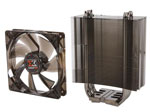 |
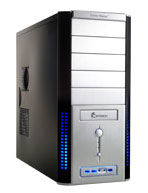 |
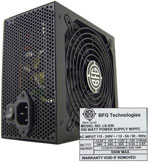 |
 |
 |
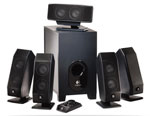 |
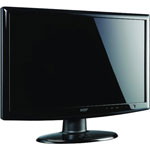 |
The last area to discuss is input devices, where we went with gamer value favorites in the Logitech G11 USB gaming keyboard and the MX518 8-button mouse. Both are very well regarded devices that fit well with the capabilities and concept of the Phenom II Overclocking system. If gaming is not your goal you could easily move to the $16 Microsoft OEM keyboard and mouse used in the Entry Phenom II build and get the complete system price down to $1194. If you will use your OC system for graphics and photo editing but not gaming, you can also drop the G11/MX518 and select precision input devices that better fit your needs.










49 Comments
View All Comments
genpat - Monday, March 2, 2009 - link
All sorts of messed up links on overclocking page as wellWesley Fink - Monday, March 2, 2009 - link
The links were added by web editors in the final prep for posting. I have been checking links and correcting them where I find errors.Frallan - Monday, March 2, 2009 - link
However only 4-8 Gb Memory. Is this for a reason i.e. does the system perform worse with 16Gb installed?
Wesley Fink - Monday, March 2, 2009 - link
With 4 dimm slots you would need 4GB dimms to populate the board with 16GB. The only 4GB dimms readily available are the Kingston 8GB DDR2-800 CAS6 kit in DDR2. They sell for over $400 for two dimms (8GB), or $800+ for 16GB.We're not opposed to more memory, but 16GB is really not very practical right now.On the Overclocking systems generally the more memory slots filled the more limited the memory overclocking capabilities. Filling two slots with fast 2GB dimms (total 4GB) seemed the best formula for best overclocking potential. We didn't even consider 8GB (4x2GB) as an option for the OC systems. Since the Entry system is about price and value we also did not consider 8GB there.
marc1000 - Monday, March 2, 2009 - link
honestly, more than 4gb for home use is a waste. I have two rigs at home (one for me, the other for my girl). Mine is 4gb and her is 2gb. With dual-core cpu's and 4gb of memory you will never have a performance-wise problem on your computer. Of course you may always want the "better and fastest", but only a few percent of users are concerned about that. The vast majority only want to use some Word-app and read some emails.Also, for these folks 32bit and 64bit OS are exactly the same things. With Windows Vista hard-coded limitation to only 4gb, there really is no need to go beyond 4gb. By the way, my OS is 32bits so I'm "loosing" 700mb to this artificial limit (and I will replace a hidden DLL soon to make it use the full 4gb).
DeepBlue1975 - Thursday, March 5, 2009 - link
So true.Had 6gbs on my machine for a while (had 2, then added 4 more), and as soon as I compared the performance delta between that and 4gbs, I ended up selling the old 2gbs so I now have just 4gbs. It is plenty for my usage pattern.
Also I don't get why the editor seems to implicate that a mid range CPU such as a phenom II will be mostly paired to pretty low end devices for anything.
I mean, come on, even if you're only an ocassional gamer, an IGP won't cut it. I don't see that even as well fitted enough for watching HD movies.
v12v12 - Wednesday, March 4, 2009 - link
"Hidden DLL" you say? Please do explain/expand for those that don't already know.JarredWalton - Monday, March 2, 2009 - link
Only Vista 32-bit has a 4GB limitation; that's the whole point of 64-bit OSes. Of course, only 64-bit apps can access more than 3GB even on Vista 64-bit... perhaps that's what you meant? (I still curse Adobe on a regular basis for their lack of 64-bit applications!)Ryan Smith - Tuesday, March 3, 2009 - link
Close. 32bit apps that are LargeAddressAware can hit up to 4GB under Vista x64.This doesn't include the other benefits of more memory of course, such as additional applications being able to use their own chunk of memory without having to share with other memory-intensive applications.